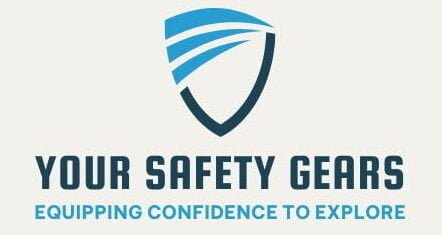The concern for safety at workplaces is great and has resulted into stringent rules across different sectors to guard against any harm to workers. One such provision is the requirement that employees use personal protective equipment (PPE). It is important to recognize that knowledge of one’s rights and obligations in the workplace is vital. For more information on workplace health and safety laws as well as access to experienced personal injured lawyers across cities in Australia click here: https://www.lawyer.com.au/. This useful source offers plenty of legal articles and a directory of accredited solicitors specializing in issues related to workplace safety.
Now, let’s consider some essential safety gear that Australian workers need depending on their specific job roles and working environments.
1. Head Protection
It’s not surprising that hard hats are common at building sites, mines, and other potentially hazardous places. These protective helmets serve the purpose of protecting employees against falling objects, bumps, or even electric shock hazards. Such hard hats should conform with AS/NZS 1801:1997 Australian standards which guarantee enough impact resistance and penetration resistance.
2. Eye and Face Protection
Safety goggles, glasses, or face masks are a must-have when it comes down to saving your eyes from flying dust particles or chemicals splashed on your face. There are several types of ocular care:
- Goggles intended for protection against chemical splashes or fine dust
- Sunglasses appropriate for shielding eyes from strong radiation as well as unforeseen circumstances
- Face masks designed for additional security from chemical sprays such as those employed by welders etc.
All eye-guards must comply with series AS/NZS 1337 standards.
3. Hearing Protection
Prolonged or recurrent exposure to high noise levels may result in an irreparable damage of one’s hearing ability. In this respect, workers should be equipped with appropriate hearing protection devices like earplugs or headphones. The kind of hearing protection required depends on the level of noise and the duration of exposure. AS/NZS 1270:2002 sets out requirements for hearing protectors.
4. Respiratory Protection
Respiratory safety is vital in workplaces where workers can inhale harmful dusts, fumes, mists, gases, or vapors. This ranges from simple surgical masks up to complex air-purifying respirators or self-contained breathing apparatus (SCBA). Choice of respiratory protection will depend on peculiar hazards and must conform with Australian standard AS/NZS 1716:2012.
5. Hand Protection
Gloves are a necessity as they prevent a variety of injuries such as cuts, burns, chemical burns and electric shocks; there are different types of gloves for various tasks:
- Cut-resistant gloves when dealing with sharp objects.
- Heat resistant gloves while handling hot stuffs.
- Chemical resistant gloves for working with hazardous substances.
- Electric insulating gloves that allow safe touching live electrical equipment.
It is important to note that all gloves must meet Australian standards like AS/NZS 2161 relating occupational protective gloves.
6. Foot Protection
Safety shoes that cover foot toes are important in many industries since there are falling objects from above, pointed things sticking out from the ground and slippery surfaces as well as electricity risks at workplaces among others. Steel cap boots are particularly common among builders and manufacturers while some niches may require additional footwear forms Safety footwear should be assessed against standards outlined in AS/NZS 2210
7. High-Visibility Clothing
People working in an environment with moving vehicles or machines, or who work at night, must put on high visibility clothing. This includes fluorescent vests, jackets or full-body suits with reflective stripes. For high visibility clothing to guarantee enough light coverage in various lighting conditions it has to meet the AS/NZS 4602 standards.
8. Fall Protection Equipment
Fall protection equipment is critical for employees who work at heights. This consists of:
- Safety harnesses
- Lanyards also known as safety ropes
- Anchor points which include pipes and metal beams
- Fall arrest systems that restrict sudden fall of a worker on working site.
All fall protection equipment must adhere to relevant Australian standards like AS/NZS 1891 for industrial fall-arrest systems and devices.
9. Sun Protection
Outdoor workers face significant danger from Australia’s harsh sun rays; therefore, employees should take the necessary steps to address this risk. While not always mandatory by law some employers require their workers use sun protective measures as part of the safety protocols they have put in place. Normally, this involves:
- Broad-brimmed hats or hard hat brims – prevents heat exhaustion/stroke
- Long sleeve shirts and long pants – prevent direct skin contact with sunlight
- Sunscreen (SPF 30+ or higher) – shields skin from harmful UVA/UVB rays
- Sunglasses that conform to AS/NZS 1067:2016 – they protect your eyes from harmful UVA/UVB rays.
10. Specialized PPE
There are certain industries that may require specific types of PPE beyond what has been mentioned earlier on . For instance;
- Welders require welding helmets, fireproof clothes and special gloves,
- Health care staff need disposable gowns, gloves and sometimes full body coverings.
- Fire fighters are provided with flame resistant wear suit fire retardant suits and breathing apparatus
Penalties for Non-Compliance
Breach of work place safety rules including misuse of personal protective equipment can cause heavy penalties. Fines may go up to substantial fines or sometimes an imprisonment when there is severe or persistent non-compliance. While the actual penalties vary from state to territory, they can be quite severe.
For example, in New South Wales maximum penalties will increase as follows:
- For individual persons conducting a business or undertaking (PCBUs) and officers of a PCBU: Up to $2,168,029 or 10 years’ imprisonment, or both.
- For officers and individuals: Up to $1 041 992 or 10 years’ imprisonment each or both.
- For corporations: Up to $10 424 983.
Conclusion
Various industries protect Australian workers through mandatory clothing worn during hazardous times. Employers together with their staff members should follow these standards so that they can achieve safer workplaces through wearing appropriate PPEs. To maximize effectiveness of PPE we require ongoing training’s programs along with proper maintenance whilst practicing safety culture matching Australia’s work place regulations .
It is recommended that when such issues arise, you should seek legal help regarding work place safety or PPE compliance since this may be of interest to you in case you have been involved in a work place accident.. To get more information concerning workplace safety, be sure to visit the website provided by the law firm at https://www.lawyer.com.au/ where they have experienced lawyers who can assist you in protecting your rights and adhering to Australian safety regulations.


